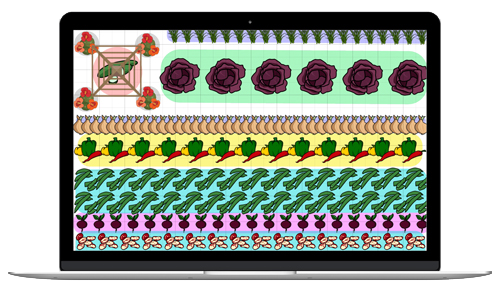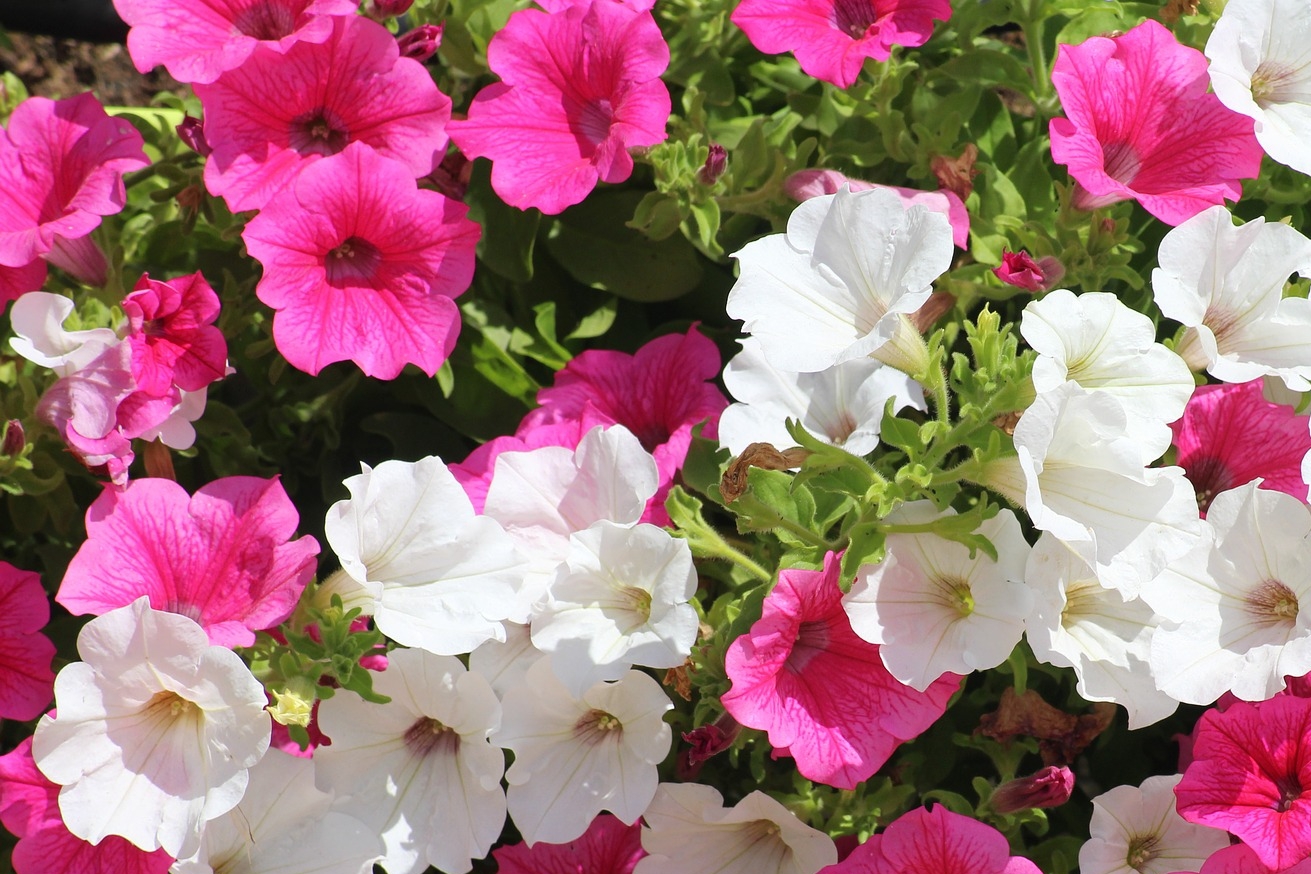
Planting, Growing, and Caring for Petunias
The Almanac Garden Planner - Use It Free for 7 Days!
Plan your 2025 garden with our award-winning Garden Planner.
Types
Multifloras
- ‘Carpet Series’ is very popular. They are compact, early blooming with 1½- to 2-inch blooms that come in a wide variety of colors, and are ideal for ground cover.
- ‘Primetime’ series stay compact and uniform, covered with 2¼-inch flowers.
- ‘Heavenly Lavender’ is an early, compact, double, deep lavender blue with 3-inch blooms on 12- to 14-inch plants.
Grandifloras
- ‘Sugar Daddy’ (Petunia Daddy Series), which sports purple flowers with dark veins.
- ‘Rose Star’ (Petunia Ultra Series), whose flowers look striped because of its rose-pink flowers with a white center.
Floribundas
- ‘Celebrity’ series petunias are compact and rain-tolerant. The flowers reach 2½ to 3 inches across.
- ‘Madness’ series petunias have big, 3-inch flowers in many veined and solid colors. They are compact and bloom until frost. They bounce back well after rain.
- ‘Double Madness’ petunias are compact and floriferous with big, 3-inch flowers all through the summer. Like their single counterparts, ‘Double Madness’ petunias bounce back within hours of a rainstorm.
Millifloras
- ‘Fantasy’ forms neat, compact mounds.
Trailing Petunias
- ‘Purple Wave’ was the first cultivar in the class of spreading petunias. It produces large blooms of deep rose-purple. It is tolerant of summer heat, drought, and rain damage. ‘Purple Wave’ remains under 4 inches tall.
- ‘Wave’ series petunias are available in a multitude of colors. Most are not quite as ground-hugging as the original. They are weather tolerant, disease resistant, and heavy-blooming.
ADVERTISEMENT
Some petunias are annual plants, others are perennial. You probably have an annual variety, which means they should be petering out right about now. Dig them up, perhaps replace them with something cold hardy like mums, and plan to plant fresh petunias next year. If you want them to come back the following year, be sure they are perennials.
I have purchased the seeds, Their purpose is pet food., I need advice and tips of when and how to sow them. such as: Is it ok to place the pots, on a windows' ledge?, do they need to be sprinkled on the soil, or they have to be covered in the substrate? and when is the time I should sow the seeds in the garden?. We live in southern Europe, the weather is warm all year, in Malta.
How do I find petunia seeds. Please advise. Thanks.
You can buy petunia seeds from almost any gardening center or online seed supplier from burpee.com to rareseeds.com. Just Google “buy petunia seeds.” Hope this helps!
Hi there, could you please give me an advice about the time I should take inside my Petunia? Living in London. The winter is not cold, but does the Petunia like winter time? Thanks in advance!
Petunias aren't winter-hardy in the UK; you should take them in before the first frosts. It can be difficult to keep a mature plant alive over winter, so taking cuttings is often a better way of keeping it going.
What is the proper way to deadhead a petunia?
To deadhead simply means to pinch a blossom that is withered or browning. Take off the blossom only, and this should keep your petunia plant healthy for a longer period.
you recommend just removing the dead flower but others say to remove the stem to prevent going to seed. which is correct?
If you remove the dead flowers, it will prevent those spent flowers from developing seeds. This helps the plant to focus its energy on producing more flowers (instead of seeds). When deadheading, make the cut about 1/4 inch below the base of the flower (along the stem), or you can pinch it back to just above the nearest leaf junction. Do not remove just the petals — the entire flower structure, including the base connected to the stem (usually a little swollen area, with several tiny straplike “leaves” surrounding it, called the calyx) needs to be removed.












